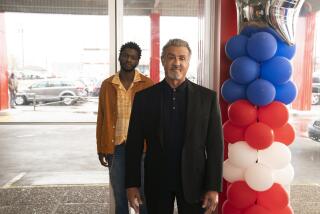Spend 49 seconds in Tulsa and be startled

Here’s a quick trip through Tulsa, including Art Deco landmarks, museums, Woody Guthrie memories and nightlife, not forgetting the oil-worker statue known as The Golden Driller.
You might not harbor secret dreams of northeastern Oklahoma. But if you do, I now understand.
I’ve just spent four days on assignment in Tulsa, learning about Cain’s Ballroom and the burgeoning Tulsa Arts District. That story is here. But in the meantime, I have plenty to tell about other things I found. This video covers several of them in a big hurry.
Many are connected to the good and bad old days of the early 20th century. That’s when the region’s oil business boomed, skyscrapers jumped up downtown and Tulsa’s population zoomed from less than 1,400 to more than 140,000.
It’s also when a white mob burned down the city’s biggest black neighborhood and someone started murdering members of the oil-rich Osage tribe north of town. The 2017 best-seller by David Grann, “Killers of the Flower Moon,” is about those killings.
Nowadays, Tulsa has about 400,000 people — and more to do than a lot of outsiders might expect. Here’s a starter list:
Inspect downtown Tulsa’s impressive set of downtown Art Deco buildings, especially the Philcade Building (511 S. Boston Ave.), whose ornate lobby is lined with Art Deco exhibits, and Boston Avenue United Methodist Church, a sleek 1929 house of worship with a tower that rises 255 feet.
Wander through the mansion, art collection and gardens of the Philbrook Museum of Art, in a fancy residential neighborhood along the Arkansas River. The art collection, mostly European and American, is housed in a 72-room neo-Italian Renaissance mansion that once belonged to Oklahoma oil baron Waite Phillips and his wife, Genevieve, among the grandest of the many Tulsa mansions that oil money built.
The art begins with the arresting gaze of “The Shepherdess” (1889), by William-Adolphe Bougereau. Be sure to step outside and stroll through the 25 acres of gardens.
Check out Western art and artifacts at the Gilcrease Museum, which is said to hold the largest collection of Western and Native American art and artifacts in the U.S., including many paintings by Thomas Moran, Albert Bierstadt and Frederic Remington.
Drive a few miles of old Route 66, but don’t get your hopes up too high. I was hoping for a rich procession of vintage neon signs and roadside architecture, but the high points are scattered amid the usual 21st century American commercial blah.
I did like the sign for El Rancho Grande, which dates to 1953. In fact, I liked it more than my cheese-drenched dinner. Next time I’ll try the hip-looking place across the street, Soul City Gastropub.
Gather at the river. More specifically, have a look at the Gathering Place along the Arkansas River. It’s a waterfront park project, with a lodge, boathouse and bridges, bankrolled by the George Kaiser Family Foundation; its first phase — 66 acres — is due to open by the end of the summer.
Compose the perfect kitsch selfie at the feet of the Golden Driller. The driller, stationed at the entrance to a local fairground at 4145 E. 21st St., is a about 75-foot-tall statue of an oil worker, shirtless, wearing a belt buckled that says TULSA. He has one arm slung over a full-size oil tower.
He first went up in the early 1950s, but he’s had plenty of work done. His skin is concrete; his bones are steel rods.
Info: Visit Tulsa.
christopher.reynolds@latimes.com
Follow Reynolds on Twitter: @MrCSReynolds
More to Read
Sign up for The Wild
We’ll help you find the best places to hike, bike and run, as well as the perfect silent spots for meditation and yoga.
You may occasionally receive promotional content from the Los Angeles Times.







